Abstract
In any field of activity, the progress involves research, experimentation, trial, success or failure, but also people with innovative vision, passion and unconditional dedication. The premises for undertaking applied research and scientific development, in many cases, begin very early, in the time of the primary school, when the interest of some young students for research and innovation is materialized in small projects that could be real starting points for their future evolution and career, with possible potential to be implemented in the society for solving several issues or problems. Thus, the scientific creativity represents the ability to find new problems and the ability to formulate hypotheses, involving additions to the prior knowledge, being associated with ethical principles and norms, due to the fact that science, technology, research, innovation do not always have positive, desirable moral and social consequences. In this respect, the paradigm of
Keywords: Scientific creativityResponsible Research and InnovationethicsSciencestudents’ feedbackIRRESISTIBLE Project
Introduction
In a general sense, the
Going further, the scientific creativity represents the ability to find new problems and the ability to formulate hypotheses, involving additions to the prior knowledge; thus, scientific creativity represents “a kind of intellectual trait or ability producing a certain product that is original and has social or personal value, designed with a certain purpose in mind, using given information” (Hu, & Adey, 2002, p. 391). The characteristics of the scientific creativity are: the need to liberate rules (flexibility), openness to experience, problem sensitivity, problem-solving (Roco, 2004); in simple terms, the scientific creativity involves the discovery of
But how creativity can be linked to
In this respect, there are definitions of RRI which try to make clear the meaning of this paradigm. The first one was stated by Rene von Schomberg (2011) - policy officer working for European Commission - in which RRI represents a clear and interactive process through which the societal actors and innovators can respond to each other for ethical acceptability, sustainability and societal opportunity for the innovation process and for its marketable products, allowing so an adequate integration of the scientific and technological progress into the society. The second definition was formulated by Stahl (2013) and defined RRI as a higher level of responsibility or even meta-responsibility, which targets to form, keep, enhance, coordinate and range extant and new research and innovation processes, actors and liabilities, in order to ensure desired and accepted research results.
Problem Statement
Creativity and responsibility are core values for societal development. The
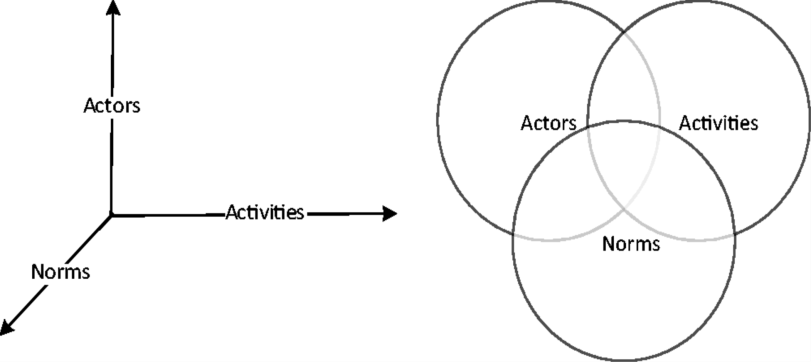
The
A multitude of
As example, in the European FP7 IRRESISTIBLE Project (
The Learning Module designed in the project, was used by the teachers together with their students. Additionally, the students visited relevant research labs / science centers, museums and transposed the learning module results into exhibits, offering an example for developing a proper relationship between research and society, with major emphasizing on exploiting the creativity. As results, some of the best exhibits produced by the students were shown during the
Research Questions
During the RRI Festival, questionnaires were applied to 112 students in order to analyse how much they are interested in RRI activities, in what measure the ethical principles are understood and respected, how much the proposed experiments - in which students were involved - contributed to the development of their creativity, and how did the students feel comfortable in the festival activities.
Purpose of the Study
This work seeks to identify the young students’ interest as expression of scientific creativity, for the RRI activities (in formal and non-formal contexts), organized in the IRRESISTIBLE project, but also with the occasion of RRI Festival. More, it is interested to see the students’ perception related to the ethical dimension of research, taking into account that in the IRRESISTIBLE project, it is raised the awareness about the relation between research and society among young people, with a special focus on school students and their teachers as intermediates.
Research Methods
The proposed investigation involved a
Findings
The first question was oriented on obtaining the feedback related to the extent to which students are interested in learning more about the main topics proposed in the project, all of them including debates and discussions in connection to the RRI dimensions: nano-world, renewable energies, climate change, smart cities etc.
Figure
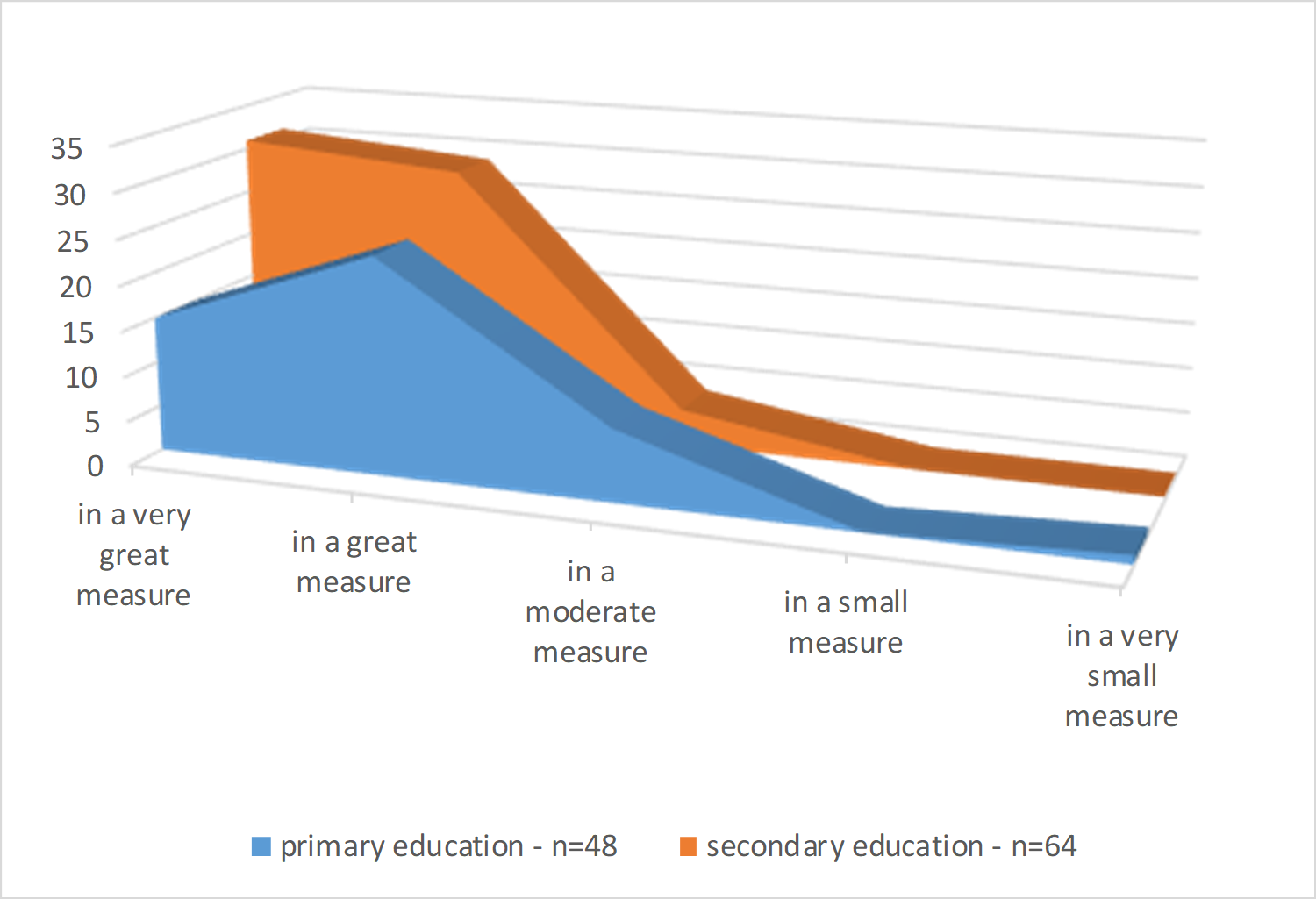
The second question explores the students’ vision regarding the ethical dimension of research, the need to apply and respect it from the societal actor point of view. Figure
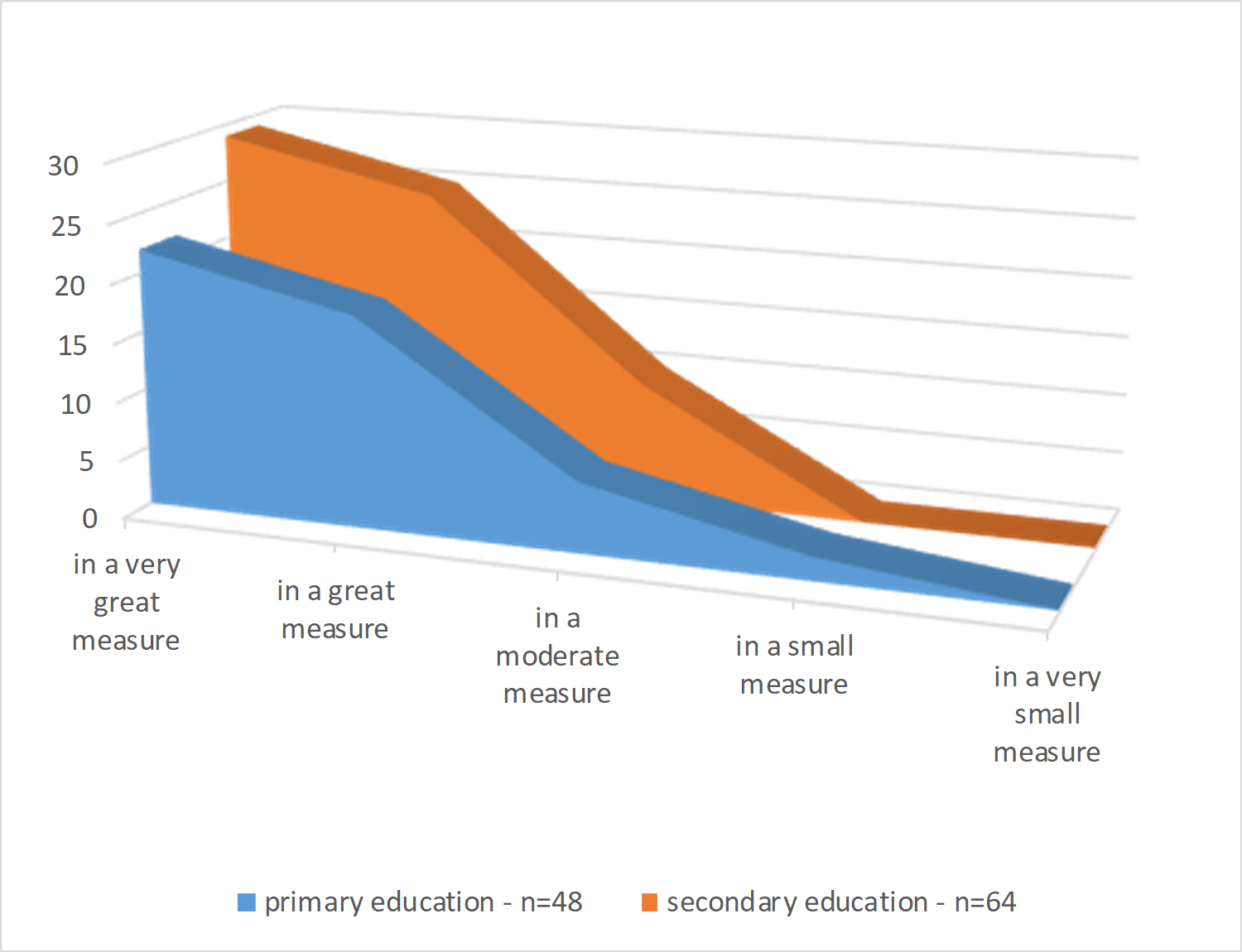
In the same questionnaire, students were asked whether they consider that the experiments they have realized, or have they attended/assisted contributed to the development of their creativity. By definition, the RRI activities largely involve a developed level of scientific creativity. Figure
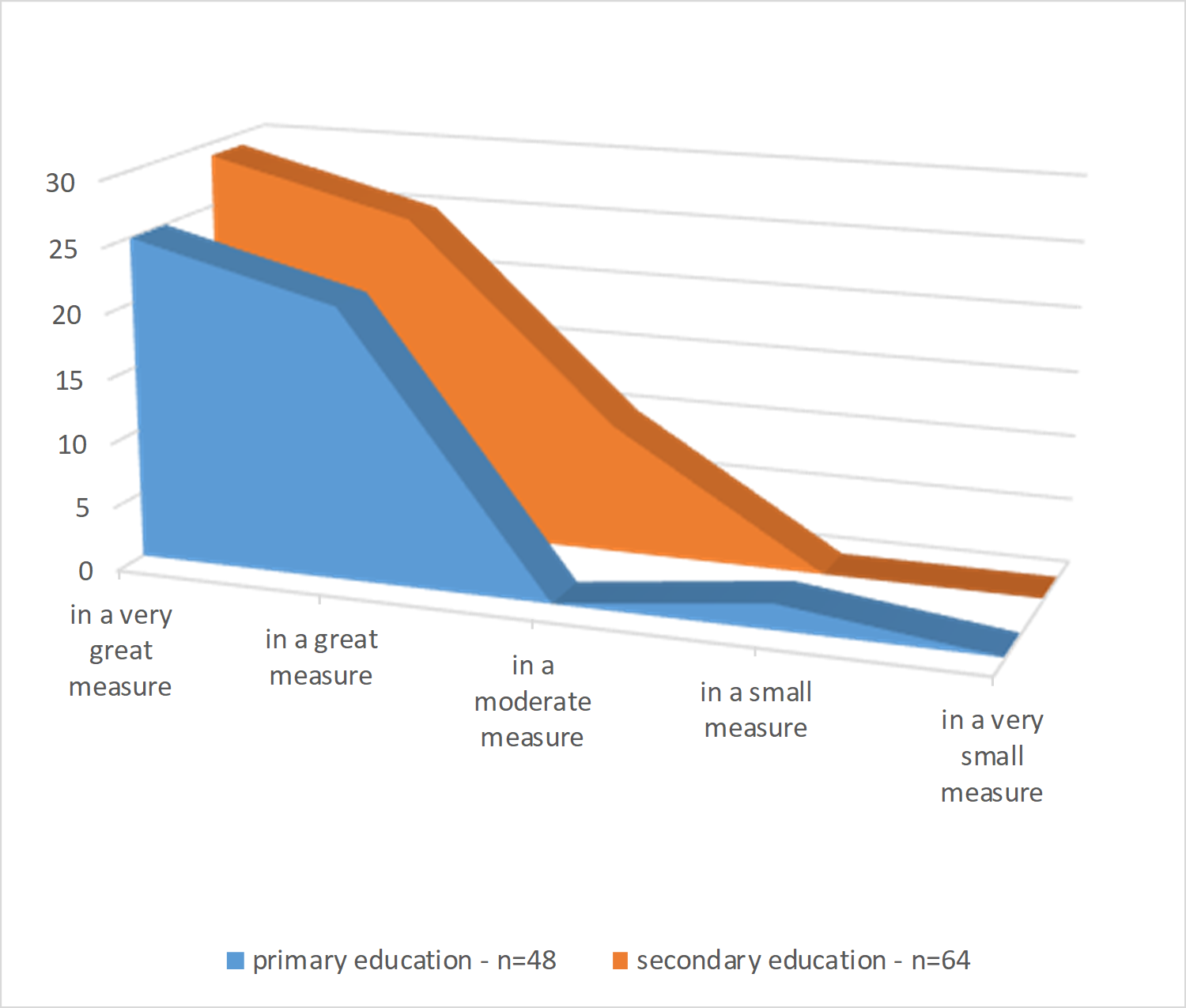
Last, due to the fact that in any activity the affective component has a decisive role, the students were asked to appreciate and describe in three words how did they feel as participants, in the RRI festival.
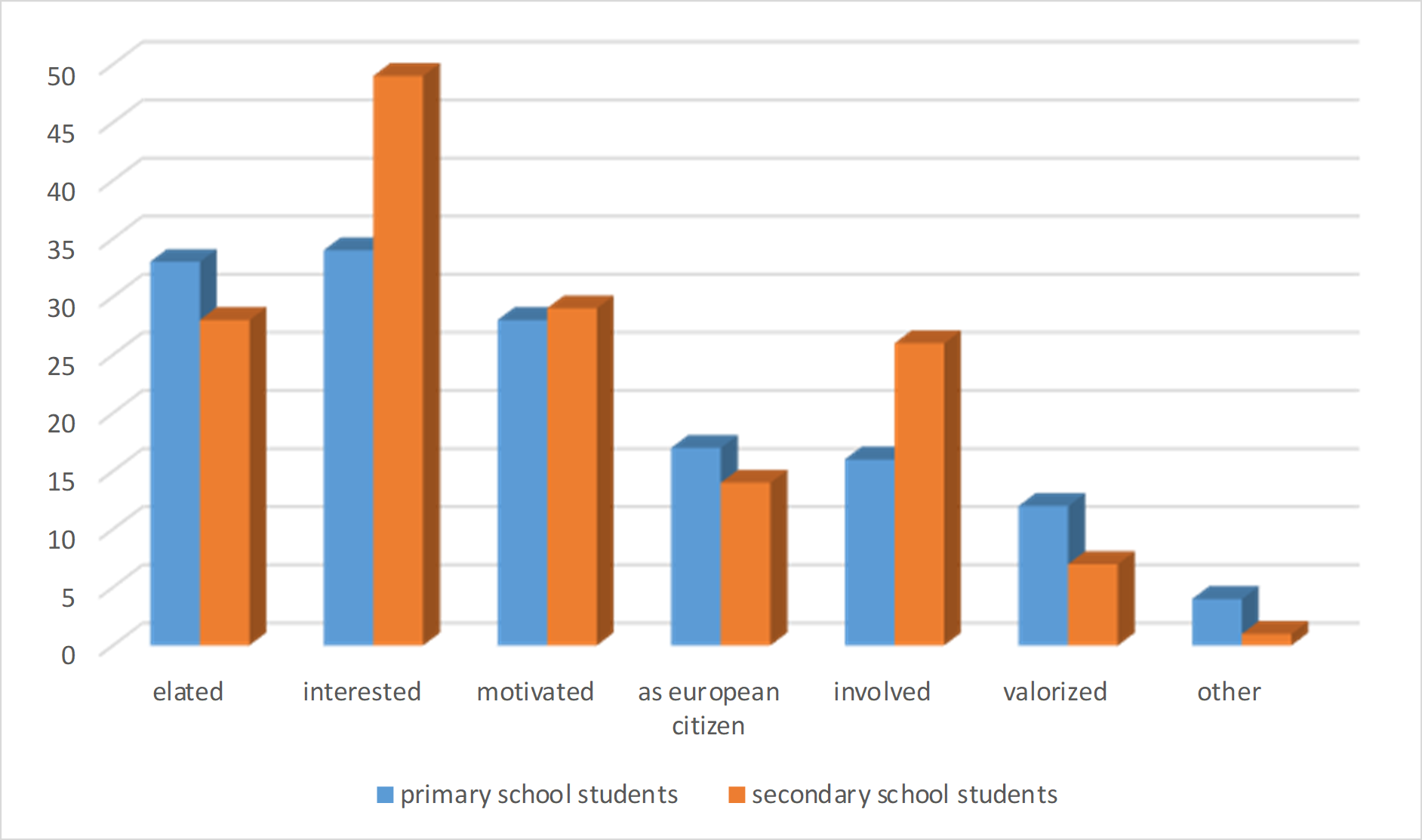
Figure
Concerning the manifested interest and involvement, the secondary school students recorded a higher level of confidence, the difference from the primary school students being attributed to their age and level of understanding, more developed for those types of activities.
Conclusion
Scientific research and scientific creativity are two important parameters of education in the actual contemporary society. The results confirm the attractiveness and the high interest of the dimensions promoted by Responsible Research and Innovation, for students. Considering their specificity, the activities that include RRI features, indirectly imply the development of scientific creativity, an important dimension of the students’ personality. At the same time, students are aware (mostly) of the ethical dimension of RRI and assumed responsibility arising from less conventional and experiential activities. In accordance with Stahl, Eden, & Jirotka (2013), RRI is best understood as a meta-responsibility, that includes, for example, the responsibility of the scientist or researcher for the integrity of her or his work, as well as the responsibility of the innovator for the potential users.
In this context, encouraging initiative, research and innovation, but also creativity, using science and technology in formal or non-formal educational contexts, become more and more important, being relevant indicators of social and human progress.
Acknowledgments
This work was funded through the Seventh Framework Programme Project “IRRESISTIBLE - Including Responsible Research and Innovation in Cutting Edge Science and Inquiry-based Science Education to Improve Teacher's Ability of Bridging Learning Environments” - a coordination and support action under FP7-SCIENCE-IN-SOCIETY-2013-1, ACTIVITY 5.2.2 “Young people and science” - Topic SiS.2013.2.2.1-1: Raising youth awareness to Responsible Research and Innovation through Inquiry Based Science Education. This project has received funding from the European Union’s Seventh Framework Programme for research, technological development and demonstration, under grant agreement no 612367. The support offered by the European Commission, through the project mentioned above, is gratefully acknowledged.
References
- Hu, W., Adey, P. (2002). A scientific creativity test for secondary school students, International Journal of Science Education, 24(4), p. 389-403.
- Roco, M. (2004). Creativitate şi inteligenţă emoţională. Iaşi: Editura Polirom.
- Schomberg, R. (2011). Towards Responsible Research and Innovation in the Information and Communication Technologies and Security Technologies Fields. Available at: http://ec.europa.eu/research/science-society/document_library/pdf_06/mep-rapport- 2011_en.
- Stahl, B.C. (2013). Responsible research and innovation: The role of privacy in an emerging framework. Science and Public Policy, 40(6), p. 708-716.
- Stahl, B.C., Eden, G., Jirotka, M. (2013). Responsible Research and Innovation in Information and Communication Technology: Identifying and Engaging with the Ethical Implications of ICTs. In: R. Owen, J. Bessant, & M. Heintz (eds.), Responsible Innovation: Managing the Responsible Emergence of Science and Innovation in Society, Wiley, p. 199-218.
Copyright information

This work is licensed under a Creative Commons Attribution-NonCommercial-NoDerivatives 4.0 International License.
About this article
Publication Date
28 June 2018
Article Doi
eBook ISBN
978-1-80296-040-2
Publisher
Future Academy
Volume
41
Print ISBN (optional)
-
Edition Number
1st Edition
Pages
1-889
Subjects
Teacher, teacher training, teaching skills, teaching techniques, special education, children with special needs
Cite this article as:
Santi, E. A., & Gorghiu, G. (2018). Scientific Creativity Related To Rri - Psychological And Practical Implications For Students. In V. Chis, & I. Albulescu (Eds.), Education, Reflection, Development – ERD 2017, vol 41. European Proceedings of Social and Behavioural Sciences (pp. 619-626). Future Academy. https://doi.org/10.15405/epsbs.2018.06.73

